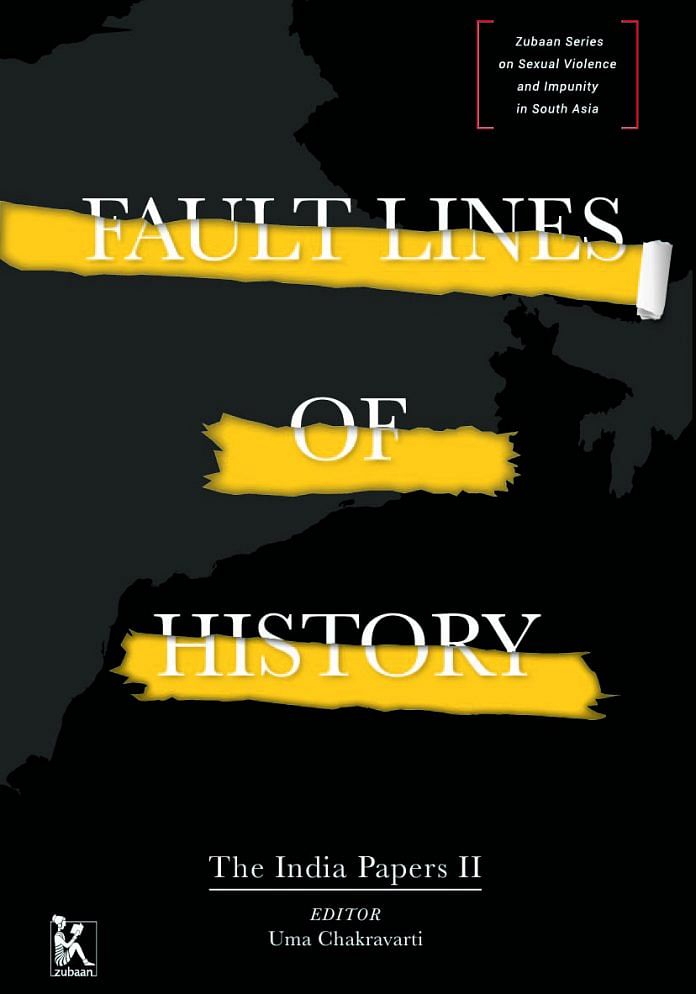Sexual violence has been normalized across different spectrums. In this collection, Zubaan Books attempts to shake the webs of complacency that have settled around it. Will this 25 November, International Day for the Elimination of Violence against Women, make any difference?
Resolution 1820, passed by the United Nations 2008, declared that sexual violence is used as “a tactic of war to humiliate, dominate, instil fear in, disperse and/or forcibly relocate civilian members of a community or ethnic group.” It is this aspect, whether in conflict zones or peacefully functioning states, that is highlighted in Zubaan’s series ‘Faultlines of History: Sexual Violence and Impunity in South Asia (India Volume II)’.
One needs to think no further than the Rwandan Genocide of the Hutus that perfectly captures the use of sexual violence as a weapon of war. In a broader context, it is an understanding that can be conceptualized with respect to a dominant group (state/caste/class/race) asserting its claim upon the bodies of those who can be perceived as minorities.
Sexual violence, as demonstrated by the various essays in the collection, is enshrined in notions of power. Using Foucault’s framework of understanding power, most of these essays effectively decentralise it by adopting an approach that diffuses the idea that power is only asserted by one entity at a given point of time. Instead, they use a dynamic model where multiple power equations are equally considered. Thus, it is not only the state that perpetrates sexual violence, which is mired in personal equations, like caste, class, race, and family hierarchies.
Sexual violence is used often as a technique of intimidation and humiliation, and is used against both men and women. Sabine Sielke, an American feminist, notes that rape is “…transposed into discourse, it turns into a rhetorical device, an insistent figure for other social, political, and economic concerns and conflicts.” The book chronicles cases of caste based/political abuse that draw attention to this aspect of sexual violence.
Cases of women and men who have suffered sexual violence at the behest of family, militants and upper caste men are also chronicled. The book provides a scathing critique of the impunity with which men in societies rooted in patriarchy are sexually exploitative. As Sielke points out, “…narratives of sexual violence ponder not an alien and uncontrollable part of human nature but the power dynamics of a particular culture,” contextualising instances of the emergence of violence. While in the North East and Kahmir, the state/militancy predominate a nuanced understanding of the situation of women, in Chattisgarh the equation is more about their peripheral status as tribals. This power equation morphs into a caste-based and religious analysis as we move to Rajasthan and Uttar Pradesh towards the end of the book.
The book lays emphasis on research and thorough investigation citing credible sources for most of the cases, unless they are testimonials in which case identities had to be protected. Even the phallocentric judicial proceedings are critiqued as the essays deconstruct a rule of law that has been promulgated by men and for men. The police, depicted as having vested interests, provides protection (either by outright dismissal of case and refusal to lodge an FIR, or by mocking and humiliating the victim) to certain political groups. The use of these horrific crimes for furthering political agendas, providing immunity to perpetrators, leaves one aghast.
The volume is an insightful read not just for academics but for anyone wishes to better understand the myriad factors that effectively propagate violence against women. It is a heartbreaking but much needed record of crimes against women, which as Uma Chakravarty points out, is still a work in progress, because we live in a society where the state often protects perpetrators. A concern that guides the entire collection is put best by Dolly Kikon: “the meaning of cultural impunity is to recognize how perpetrators of sexual violence enjoy amnesty and the survivors are deprived from the process of justice and rehabilitation.”






